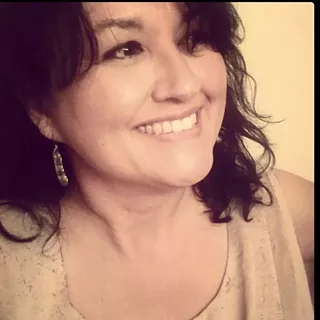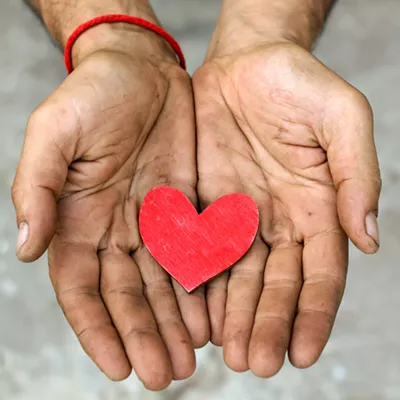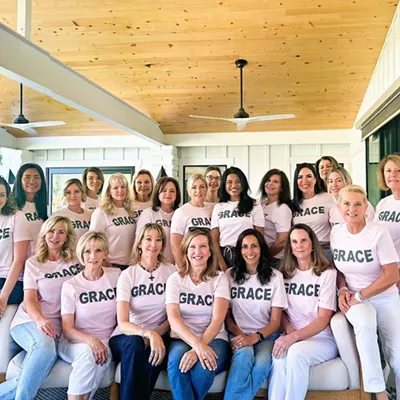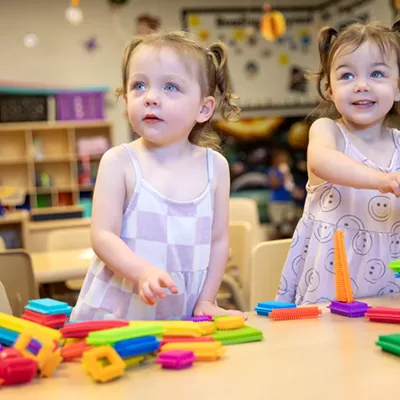Every year since 1974, Tucson Meet Yourself has been a place that brings all facets of Tucson life and culture together to celebrate our city and diversity. We asked TMY Program Director Maribel Alvarez six questions on one of our favorite Tucson get-togethers. See the sidebar for her Top Three. For more information on this year's TMY, visit www.tucsonmeetyourself.org.
The mission of Tucson Meet Yourself remains the same, but has it changed since it first started in 1974?
In 1974, when the first TMY took place, words such as "diversity" and "multiculturalism" were not commonly used. The Civil Rights movement had awakened the country to ideas about cultural equity and dignity, but cities were struggling to grasp what that meant. The first TMY was a thoughtful, understated gesture of radical cultural democracy in a town that invoked heritage left and right but also systematically worked against it.TMY literally "occupied" the civic center of Tucson with voices, sights, sounds and tastes that were claiming their day in the sun. It still does that, but today cultural diversity is invoked by so many diverse intentions that the phrase is almost a cliché. In general there is broader awareness about what words to use or avoid talking about race and ethnicity, but a lot of it remains at a superficial level. Our work is not yet done.
How many people do you expect TMY weekend?
Every year we prepare for approximately 100,000 to 120,000 people. Given that we stage the festival in and around public building and streets in the heart of the city's civic center, as opposed to doing it in a stadium or open space, we are pretty much at full capacity with those numbers.
Is there anything different this year that you are particularly excited about?
Two things jump up. I'm curating an exhibit within the festival that celebrates unique research done in Tucson with Tucsonans that resulted in amazing advances in understanding what it means to be human. It is part of the UA School of Anthropology's centennial celebration. Secondly, for the first time in the festival's 42 year-history, we made direct substantial cash awards to performance artists. We set aside a fund of$25,000 to award eight inaugural Artistic Fellowships. The goal is to support richer, more enduring and authentic artistic exchanges among traditional artists. We received some exciting proposals. The eight winners are being presented as featured acts in the festival. But, of course, this in no way diminishes the already amazing 100 folk artists, 90 other music and dance groups and of the more than 50 food vendors we regularly support.
How are you able to pull this off every year?
The secret of our success I believe rests on three things. First, we have a very clear and focused mission that was gifted to us by our founder Jim Griffith. Big Jim is still actively involved so we feel accountable to get things right. Secondly, we have amazingly smart, honest and hard-working staff, suppliers, sponsors, and volunteers. Our Operations Director Tim Escobedo really knows what he is doing. And third, we truly cultivate a culture of learning and feedback as an organization. We conduct random surveys of the public, every year we commission an outsider guest folklorist to write an evaluation. In other words, we are hard on ourselves.
The TMY is now under the umbrella of the Southwest Folklife Alliance. Part of that has meant a new direction and possibly growing the TMY model in other communities. How has that gone?
TMY has always been the result of a partnership between a community-based effort and the scholarship led by a UA folklorist. The Southwest Folklife Alliance is now an affiliate nonprofit of the University of Arizona, housed at the Southwest Center in the College of Social and Behavioral Sciences. By being aligned closer with the UA's mission as an educational institution, we are able to think about heritage arts, foods and practices in a broader sense, not only expressed through festivals but also as a toolbox for social and economic development. The first steps we have taken in these directions, our annual Folklore Fieldschool for example, have been extremely well received.
Why do you love TMY as its director and why do you think we love it so much, too?
There are not many things we do in our jobs or in our lives that have the unique combination of being super fun and exciting but also have this level of depth, impact and meaning. TMY is the real deal: nothing artificial, rigid or self-important. The foods at the festival are working folks' food; the beauty you see is ordinary; the people who participate and attend are the most diverse audience of any other large event in the region. In that last point I feel a real kinship with the All Souls Procession: simply a mass of humanity making a collective statement about what a society could be like, if we only tried.








